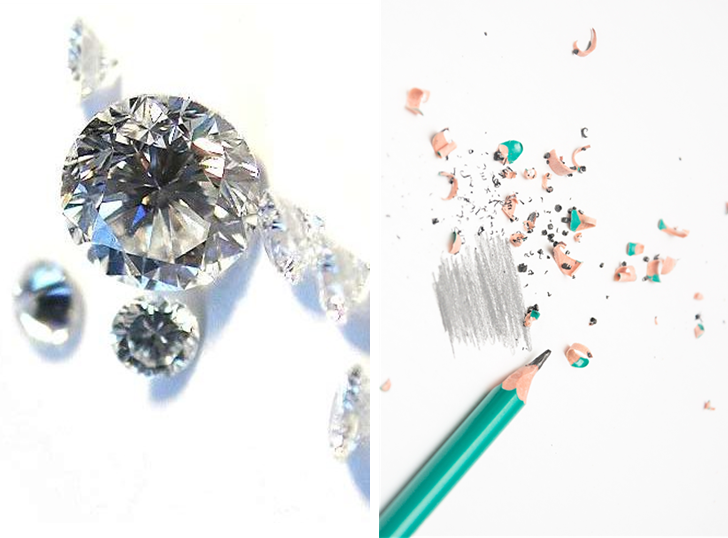Computers have uncovered a key relationship between pencils and diamonds — here’s what that could mean for your mobile phone and treating illnesses in the future.
New research published inSciences Advancesreveals howresearchersat Griffith University and the University of New South Wales have used computers to solve a problem that has eluded experiments for more than a decade — that the diamond structure of commonly used compound boron-nitride is more stable than the graphite structure of a pencil.
But they’ve also shown that this order would swap in a hot cup of coffee.
The work byDr Tim Gouldfrom Griffith’sQueensland Micro- and Nanotechnology Centreand Dr Claudio Cazorla from UNSW’s School of Materials Science and Engineering means predicting new materials on computers is one step closer to a reality — with big implications for future technologies, such as batteries.
“Boron-nitride is a heat and chemically resistant refractory compound of boron and nitrogen and is found in cosmetics, lubricants and abrasives,” Dr Gould said.
“Diamonds are made from carbon atoms, as is graphite. The big differences between the two materials are in entirely in the way the carbon atoms are arranged.
“Scientists know that the graphite form of carbon is more stable than the diamond form. Only at high pressures — such as deep in diamond seams — do they swap.”
Carbon has two chemicalneighbours: boron and nitrogen. Together, theseneighboursact very much like carbon on its own.
The resulting boron-nitride compound also comes in diamond and graphite forms, which are like carbon in some ways (diamond boron-nitride is almost as hard as a regular diamond), but dramatically different in other ways (boron-nitride can operate in environments which destroy diamonds).
This makes them technologically interesting for problems where regular diamonds (or graphite) have issues.
“The problem is, experiments struggle to differentiate which of the two forms is more stable, and at what temperature they swap,”DrGouldsaid.
“Solving this problem is relevant to technology developments as the order influences the properties of boron-nitride diamonds under pressure, as in high-quality saws and other technologies that require ultra-hard materials.”
The researchers have shown that, unlike carbon, the diamond structure of boron-nitride is more stable than the pencil structure.
But at the temperature of a long black coffee the graphite form becomes more stable, like carbon.
“We were able to solve this problem by using supercomputers (at Griffith, and in the national and Western Australian facilities) to understand the stability of the two pristine structures,” Dr Gould said.
“We used cutting-edge theoretical methods that were able to achieve a level of precision even better than experimental work, which involved the challenging task of turning diamonds into pencils. We were thus able to answer the questions that experiments could not.”
Dr Gould and Dr Cazorla’s work has direct implications for how boron-nitride compounds can be used in technologies. It even turned up a new form of boron-nitride that was previously unknown, and which might one day have its own uses.
More importantly, it shows the growing importance of computers in science. Until very recently, computer models were always judged on how well they could reproduce existing experimental data.
Now experiments can be judged on how well they reproduce predictions from computers.
This means new material design can increasingly be automated using computers, which can churn through thousands of compounds in the time it would take several people to make one compound in a laboratory.
Being able to automate the selection process for new materials will have huge implications for the rate of discovery, which will accelerate the pace of technology development.
Dr Gould and Dr Cazorla’s research suggests the age of scientific computing is here. Before long mobile phones will have materials that were invented on a computer. Eventually, it could allow drugs to be tailor-made for a specific person and illness.
But for now, the researchers know that boron-nitride diamonds are stronger than pencils — at least until you dip them in coffee.
